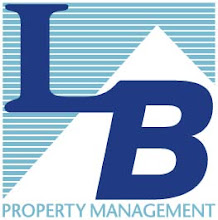The job of a resident manager is an important one. When a resident manager employs consistent procedures in handling recurring situations at their property the tenants are happier, the building saves money and the manager's job becomes easier.
How a manager handles a tenant that is vacating can dramatically affect the performance of an apartment building. Mishandling the situation results in owner's paying for repairs caused by tenants, tenants leaving with ill feelings that may affect future leasing efforts, litigation and even penalties and fines assessed on the property owner. The move out process starts as soon as a tenant advises the manager that they are moving out and continues until the day they receive an accounting of their security deposit and their refund check, if they are in fact entitled to receive a refund. The steps below have helped the resident managers with our organization avoid these pitfalls and helped save our property owners money.
1. Notice of Intent to Vacate: Tenant delivers a written 30 Day Notice of Intent to Vacate. This must be done in writing to be valid. A tenant telling the resident manager they may move in thirty days as they pass him or her in the laundry room is not valid, nor is leaving a voice mail message on an answering machine. It must be in writing to be valid.
2. The resident manager should be required to send the written notice to the management company the day they receive it. This is a very important step. The notice should be faxed or emailed to the office and they should keep the fax confirmation page.
3. Initial Inspection: The resident manager must deliver, to the tenant, a written notice advising the tenant of their right to request an inspection prior to vacating the apartment. Our managers use a form which is delivered to all tenants once they deliver their notice of intent to vacate. Language has also been added to most of our leases which also advises the tenant of this right. The second notice is to ensure we are in compliance with every tenant. It is important to remember that the tenant has a right, not an obligation to have an initial inspection. If they request an inspection we must do one. If they do not request an inspection or refuse an inspection you must have them sign a form acknowledging they have chosen not to have an initial inspection. A landlord cannot force the tenant to have an initial inspection. If the tenant asks for an inspection it cannot be scheduled earlier than two weeks before the end of the tenancy and they must receive written notice 48 hours in advance of the inspection time. Written notice is necessary even if you have agreed with the tenant on the date and time. You will identify during this initial inspection all items that will result in a deduction from the tenant's security deposit. The tenant must be given a copy of this list and he or she may repair, correct, or replace the items prior to vacating to avoid the deductions from their deposit.
4. Final Inspection: You must inspect the unit immediately after the tenant has moved out of the unit. This means the same day. It is at this time that you will list on a "Move Out Report" all items that need to be repaired and/or damages caused by the tenant. You do not include on the move out report items that are ordinary wear and tear. Only include items that are damages caused by the tenant on the Move Out Report. Make sure you have recovered from the tenant all keys, remotes, mailbox keys, and any other items belonging to the property. If any items are not returned they should be noted on the Move Out Report so the tenant is charged to replace those items. Also keep damaged items whenever practical. Sometimes you will keep a piece of the carpet that was stained or burned as evidence should the deposit deductions be disputed. It is not always practical but whenever possible it should be done. Photos should always be taken. You will need these should the tenant dispute the charges. You should also prepare a "Make Ready Report" which will include all items needed to bring the unit back to rent ready status. This report will include items for which the tenant will be charged, and items that are ordinary wear and tear.
5. Request a Vacancy Code: The resident manager should then call the management company to obtain a Vacancy Code. A vacancy codes is a unique code issued by the management company that confirms the unit has been vacated and the date on which it was reported. The manager should write the vacancy code on the top of their copy of the Move Out Report.
6. The Move Out Report is to be sent to the management company the day the tenant vacates the unit. It should be sent via facsimile or email with the vacancy code written clearly at the top. Do not allow a gap in time between the unit vacating and when this report is delivered to the management company.
7. The resident manager should then work with their property supervisor and schedule all work needed to return the unit to a rent ready status.
8. The tenant should receive from the management company an accounting of all deductions and a refund check within 21 days from the day they delivered possession of the unit to the resident manager. Enforcing the policies above, whether you are self managing or working with a professional management company will help ensure this deadline is not missed. It will also help keep the peace with departing tenants. There is no easier way to find yourself in litigation than to disregard this legal deadline.
Proper and efficient handling of a tenant when they are vacating a unit is a fundamental aspect of a resident manager's duties in most cases. While the steps above do not cover every scenario they will help save money, make tenants feel they are being treated fairly and avoid unnecessary disputes over deductions. They will also help ensure vacancies are reported and turned as soon as possible. It today's rental market tightening up the policies and procedures will result in a better performing asset.
Thursday, June 25, 2009
Subscribe to:
Post Comments (Atom)





No comments:
Post a Comment